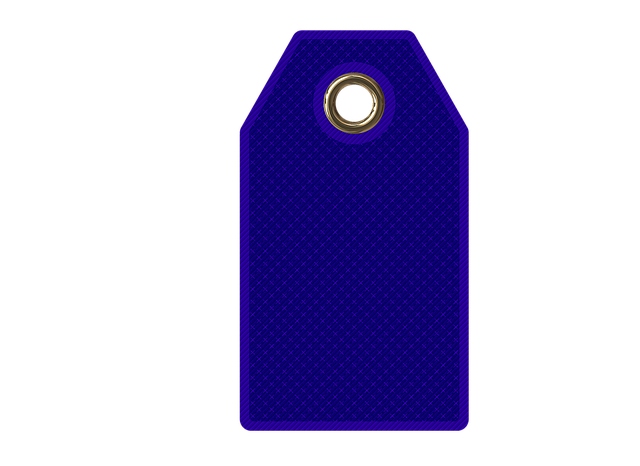Skin tags, common growths on the neck, armpits, and groin, can be removed at home using diluted tea tree oil, a natural alternative to traditional Sheffield Tag Removal. Tea tree oil's antimicrobial and anti-inflammatory properties reduce skin tag size and appearance by killing bacteria and calming inflammation. Before use, sterilize the skin, perform a patch test, and dilute tea tree oil with a carrier oil like jojoba or coconut. Apply the mixture twice daily for several weeks using a clean q-tip or cotton ball; results may take several weeks. Always exercise caution on sensitive areas and consult a dermatologist if symptoms persist or worsen.
Looking for a natural solution to get rid of skin tags? Tea tree oil has emerged as an effective alternative for Sheffield tag removal. This essential oil possesses antimicrobial and anti-inflammatory properties, making it ideal for addressing these small, harmless growths. In this guide, we’ll explore the science behind tea tree oil’s effectiveness, preparation tips, application methods, potential benefits and side effects, and when to consult a dermatologist.
- Understanding Skin Tags and Tea Tree Oil
- Preparation and Safety Precautions for Application
- Application Techniques and Tips for Effective Removal
- Potential Benefits, Side Effects, and When to Seek Professional Help
Understanding Skin Tags and Tea Tree Oil
Skin tags, also known as acrochordons, are small, harmless skin growths that typically appear on the neck, armpits, and groin area. They are usually not a cause for concern but some folks prefer to remove them for aesthetic reasons or comfort. Traditionally, many have turned to Sheffield Tag Removal methods due to their effectiveness and accessibility. Tea tree oil, with its powerful antimicrobial and anti-inflammatory properties, has emerged as a popular natural alternative for skin tag removal.
This essential oil, derived from the leaves of the Australian tea tree (Melaleuca alternifolia), is renowned for its ability to soothe irritated skin and combat infections. When applied topically, tea tree oil can help reduce the size and appearance of skin tags by killing bacteria and calming inflammation. Its natural properties make it a gentle yet potent solution, especially for those seeking non-invasive Sheffield Tag Removal methods.
Preparation and Safety Precautions for Application
Before applying tea tree oil for skin tag removal, proper preparation and safety precautions are essential. Start by sterilizing your skin; wash the affected area with mild soap and water, then pat it dry gently. This step ensures that the oil is absorbed effectively and minimizes the risk of irritation.
When using tea tree oil, always perform a patch test first to check for any adverse reactions. Dilute the essential oil with a carrier oil, such as jojoba or coconut oil, in a 1:1 ratio. Apply this mixture topically to the skin tag using a clean cotton swab or applicator. Be cautious and avoid contact with healthy skin to prevent irritation or allergic reactions.
Application Techniques and Tips for Effective Removal
When using tea tree oil for skin tag removal, Sheffield tag removal techniques are essential for achieving optimal results. Begin by diluting a few drops of tea tree oil with a carrier oil like coconut or jojoba to avoid irritation. Using a clean q-tip or cotton ball, gently apply the diluted oil directly onto the skin tag. This method allows for targeted treatment without causing discomfort. Repeat this process twice daily, consistently for several weeks. Consistency is key; regular applications will help soften and eventually eliminate the skin tag.
For enhanced effectiveness, consider combining tea tree oil with other natural remedies like apple cider vinegar or essential oils known for their anti-inflammatory properties. Always perform a patch test before applying to larger areas or if you have sensitive skin. Additionally, be patient as it may take several weeks of persistent use to see noticeable changes in the appearance and texture of the skin tag. Remember that results may vary based on individual factors, including skin type and the size and age of the skin tag.
Potential Benefits, Side Effects, and When to Seek Professional Help
Tea tree oil, known for its antimicrobial and anti-inflammatory properties, has long been used in natural skincare routines. When it comes to skin tag removal, this essential oil offers a potential solution for those seeking alternative treatments. Skin tags, small, harmless growths that often appear on the neck or armpits, can be removed at home using tea tree oil as a natural exfoliant and irritant, encouraging their shedding. Many find relief from the itching and discomfort associated with these tags through regular applications of diluted tea tree oil.
However, like any topical treatment, it’s essential to consider potential side effects. Tea tree oil is generally safe for most skin types but can cause irritation, redness, or dryness, especially if used undiluted or on sensitive areas. Those with compromised immune systems or specific skin conditions should exercise caution and consult a dermatologist before using tea tree oil for Sheffield tag removal. If symptoms persist or worsen, or if you notice any unusual reactions, it’s crucial to seek professional medical advice.
Tea tree oil has shown promise as a natural remedy for skin tag removal, offering a potential game-changer for those seeking Sheffield tag removal. By understanding its application techniques and safety precautions, you can effectively target these small growths at home. However, it’s essential to remember that individual results may vary, and consulting a dermatologist is advised if skin tags persist or cause concern. With careful consideration and proper usage, tea tree oil could be your secret weapon for achieving smoother, tag-free skin.
